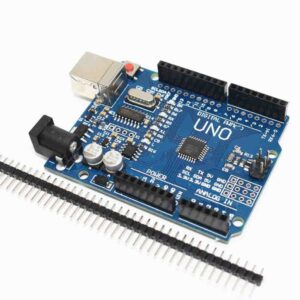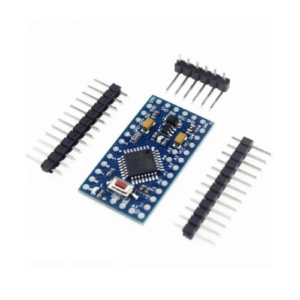Subtotal: 208.86₹ (incl. tax)
Arduino MEGA R3 ATmega2560-16AU Development Compatible Board CP2102
1,200.00₹ (Exc. GST)
CompareThe Arduino Mega is a microcontroller board based on the ATmega2560. It has 54 digital input/output pins (of which 14 can be used as PWM outputs), 16 analog inputs, 4 UARTs (hardware serial ports), a 16 MHz crystal oscillator, a USB connection, a power jack, an ICSP header, and a reset button. It contains everything needed to support the microcontroller; simply connect it to a computer with a USB cable or power it with an AC-to-DC adapter or battery to get started. The Mega is compatible with most shields designed for the Arduino Duemilanove or Diecimila.
The Mega 2560 R3 also adds SDA and SCL pins next to the AREF. In addition, there are two new pins placed near the RESET pin. One is the IOREF that allow the shields to adapt to the voltage provided by the board. The other is not connected and is reserved for future purposes. The Mega 2560 R3 works with all existing shields but can adapt to new shields that use these additional pins.
Arduino is an open-source physical computing platform based on a simple i/o board and a development environment that implements the Processing/Wiring language. Arduino can be used to develop stand-alone interactive objects or can be connected to software on your computer (e.g. Flash, Processing, MaxMSP). The open-source IDE can be downloaded for free (currently for Mac OS X, Windows, and Linux).
Specification:
| Microcontroller Chip | ATmega2560 |
| Analog I/O Pins | 16 |
| Digital I/O Pins | 54 (of which 14 provide PWM output) |
| Flash Memory | 256 KB of which 8 KB used by bootloader |
| SRAM | 8 KB |
| EEPROM | 4 KB |
| DC Current per I/O Pin | 40 mA |
| DC Current for 3.3V Pin | DC Current for 3.3V Pin |
| Operating Voltage | 5V |
| Input Voltage | 7V to 12V |
| Input Voltage (limit) | 6V-20V |
Based on 0 reviews
Only logged in customers who have purchased this product may leave a review.

 Arduino UNO R3 SMD Atmega328P Board - Clone Compatible Model
Arduino UNO R3 SMD Atmega328P Board - Clone Compatible Model 




There are no reviews yet.